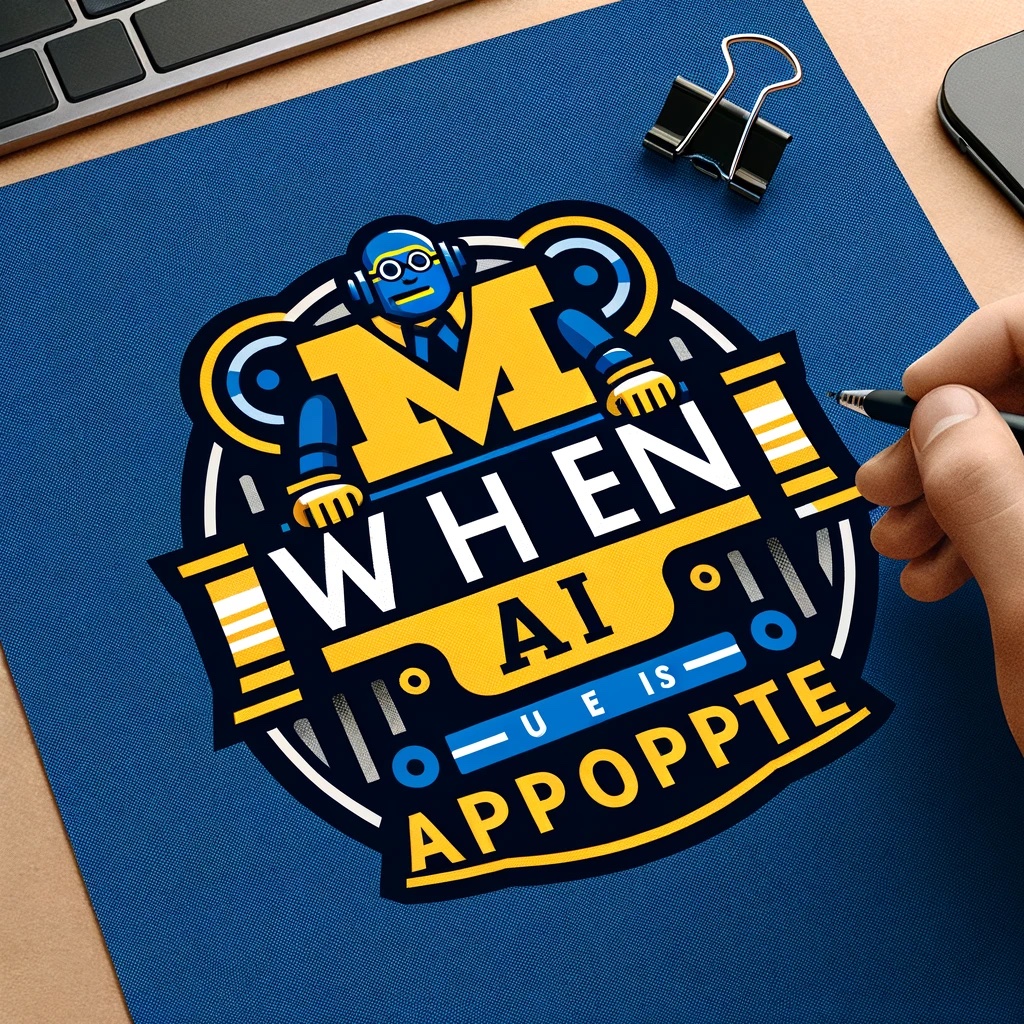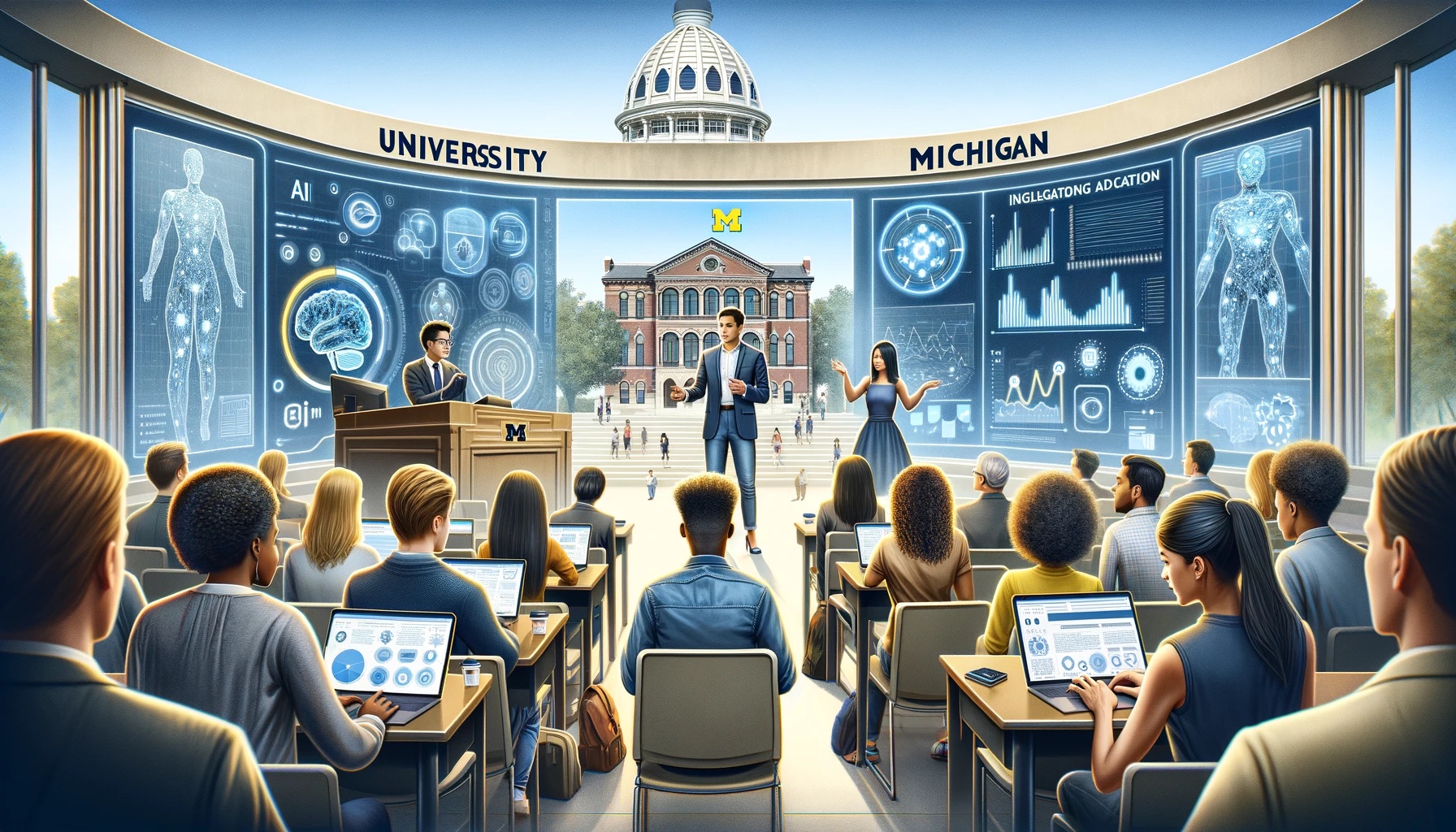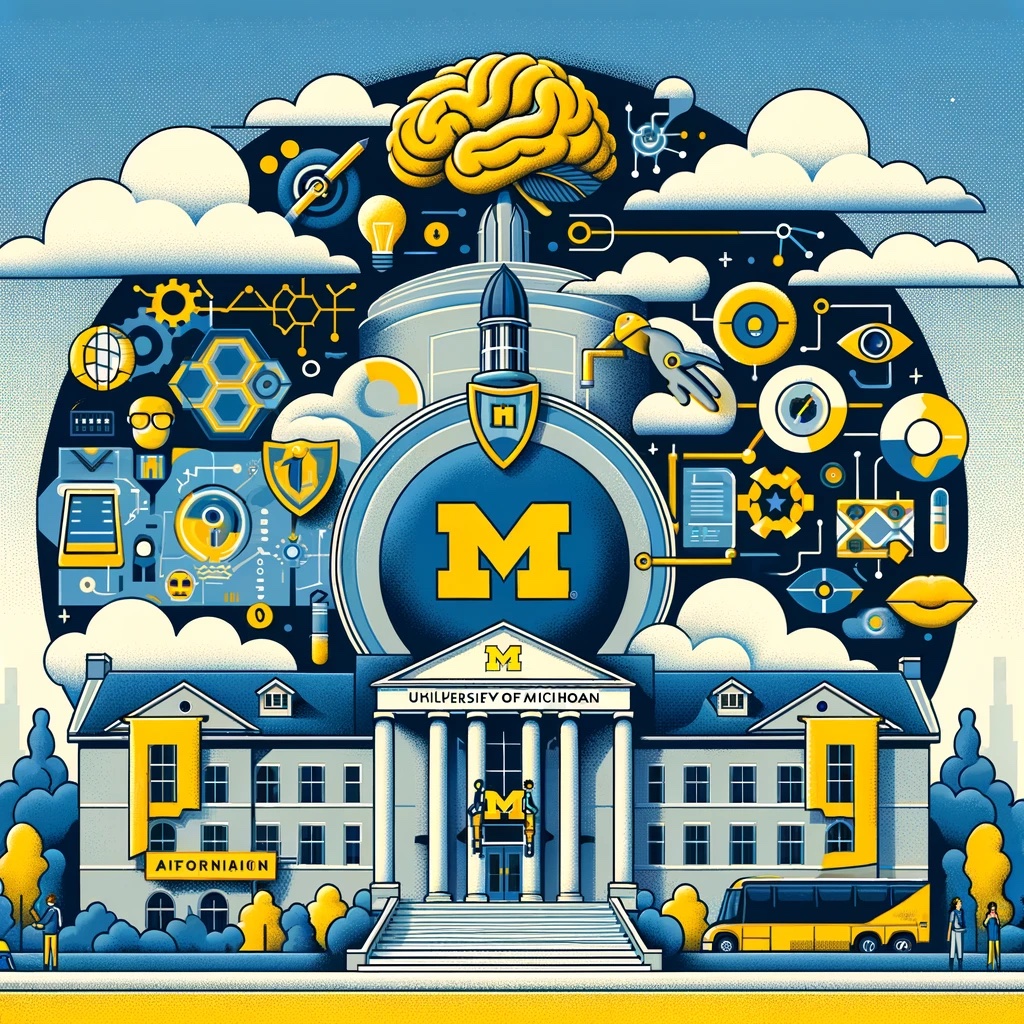Striking the Balance: Guidelines for Ethical AI Usage at the University of Michigan
In an era dominated by technological advancements, the integration of generative AI in academic settings poses both opportunities and challenges. As students at the University of Michigan, we recognize the need for universities to establish guidelines that govern the appropriate use of AI across various facets of academia. This article explores a comprehensive set of proposed guidelines to ensure ethical, transparent, and responsible utilization of AI within the university.
Student AI Usage: Nurturing Responsible Integration
In an age where students are increasingly exposed to generative AI tools, the University of Michigan should recognize the need to create guidelines that balance the educational advantages of AI with the necessity of foundational learning. The University of Michigan should restrict AI in such a way that student learning is prioritized, so that students are actively engaged in mastering foundational concepts without a reliance on AI. However, the university should also recognize the increasing integration of generative AI in the workforce. Completely restricting the use of AI in educational settings can prove detrimental, as students need to acquire the skills to navigate and leverage AI tools effectively for future professions. Thus, we propose that AI should be allowed in some capacity, with the specific restrictions defaulting to the discretion of individual professors.
Citation: Acknowledging AI Contributions
The University of Michigan should advocate for transparency in acknowledging the role of AI in academic work. Students should be prohibited from entirely relying on AI to complete assignments. Contributions made by AI tools to student work should be cited, providing due credit to the technology. While flexibility should be permitted for allowing AI usage on smaller assignments, it is crucial to recognize AI consultation, promoting an ethical approach to collaborative learning. AI tools can serve as valuable aids in research and idea generation, however, the university encourages the production of original content. The uncited use of significant AI-generated content should be considered a form of plagiarism. This will reinforce the significance of accurate and credible academic work that the University of Michigan prides itself on.
Faculty Lectures and Course Design
AI can enhance lectures and aid in lesson planning, but it should not replace human expertise as the primary content source. Thus, faculty members should be forbidden from entirely relying on generative AI to teach a class. Faculty members should be required to disclose any AI assistance in lesson planning to students in order to foster environments of trust and transparency in the classroom. Educators should also be required to be transparent about the use of AI in their grading methods. However, until AI detection services are more accurate, faculty members should be discouraged from using these systems to determine if AI has been used in student work.
To address concerns about unauthorized student AI usage in assignments, teachers should be encouraged to design assignments that can be completed in class under supervision when AI usage is a concern. This proactive approach can mitigate risks of unethical AI usage while ensuring students are grasping key course concepts.
Conclusion
As the University of Michigan embraces the benefits of AI in academia, these guidelines provide a roadmap for ethical and responsible integration. By prioritizing transparency, credibility, and academic integrity, the University of Michigan will aim to create an environment where AI enhances the educational experience without compromising the fundamental values of human-driven learning.





